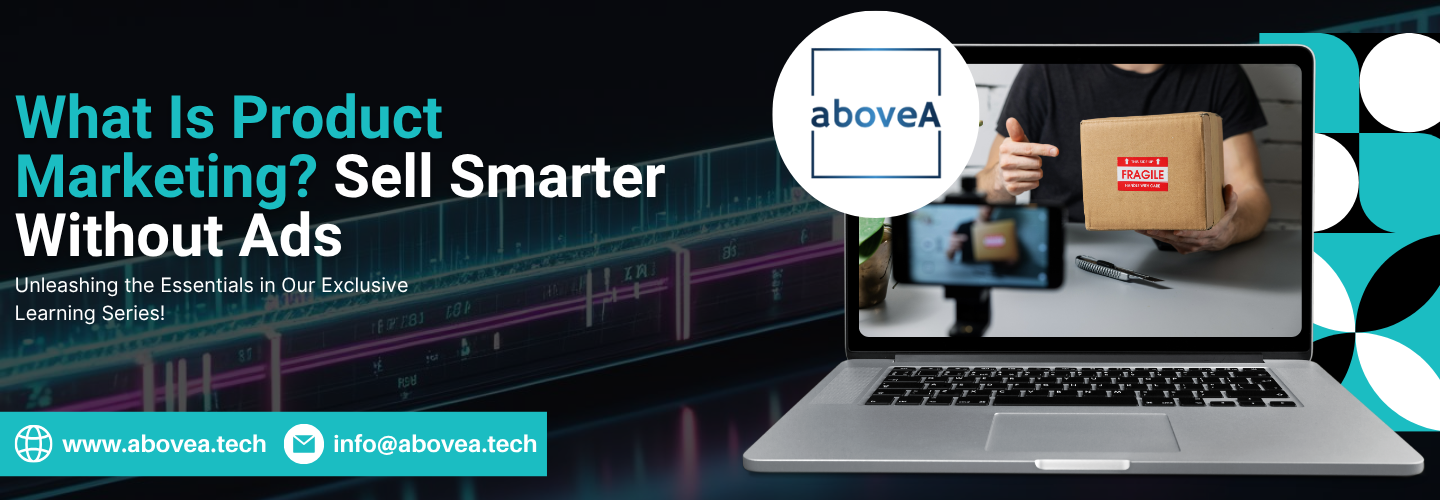
What Is Product Marketing? How It Helps You Sell Without Ads
Product marketing is an approach that can enable you to earn more without spending on ads. This type of marketing entails a deep understanding of users, shaping clear messaging. Also, guiding people through your product journey.
In this article, you will learn exactly what product marketing means, how it works without paid campaigns, what product marketers actually do, and which strategies drive long-term growth. Plus, we will explore a real-world case study where smart positioning led to triple the sales, no ads needed. If you’re building something great and want it to grow on its own, product marketing is how you make that happen.
What Is Product Marketing?
In a nutshell, product marketing is meant to assist prospective users in understanding the benefits of your solution. It can be done by showing them what your product does, why it matters, and how it solves their problems. However, you should keep in mind that many fail because they try sell hard. Never do that. You are here to help the right person find the right thing and make this moment feel like the right time.
That said, the main job of product marketing is to make the product easy to understand and easy to use. It should always tap into these four big areas:
- Positioning – This means saying clearly who the product is for and how it’s different from others.
- Messaging – These are the words that simply explain the product’s value.
- Launching – A product marketer helps share new updates or features with the world.
- Educating users – They teach people how to use the product and get the best results.
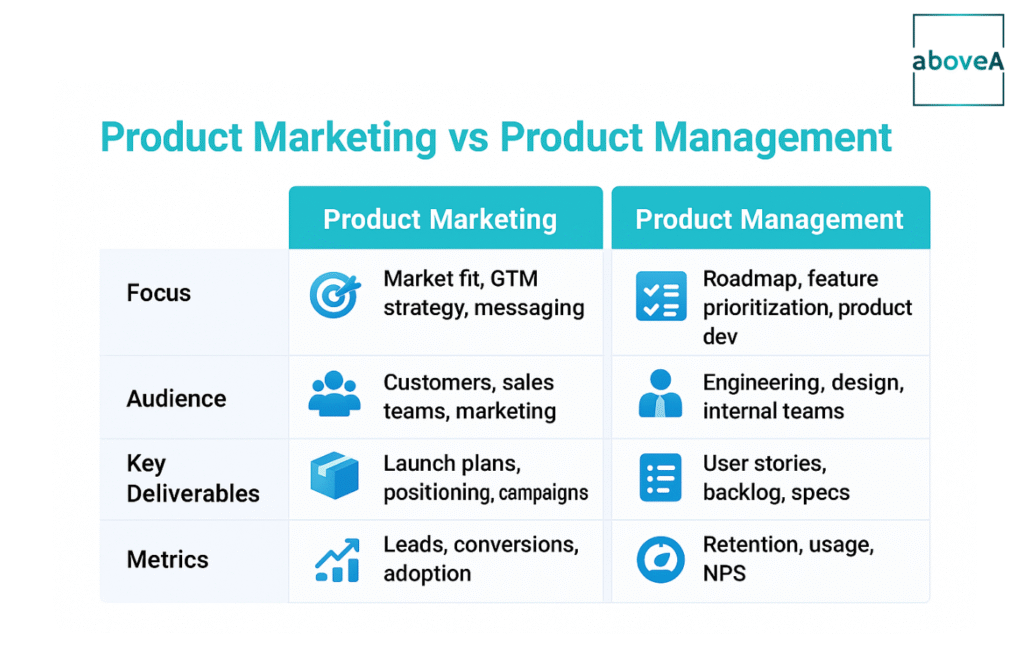
However, some people assume that marketing is just about ads. But this is different. Traditional marketing often pays to get attention, or as often happens, get none at all. Product marketing is a way that can help you earn it by being useful. It works with the product team, sales, and support; thus, it’s a cross-functional initiative. Together, they make sure customers have what they need, from the first click to full use.
So, what is product marketing? It’s an engine. It doesn’t shout. It guides. It builds trust. And when done well, it helps you grow, without needing paid ads at all.
Why Product Marketing Works Without Ads
You don’t need ads to generate revenue. Product marketing will help you sell without ads by showing real value and building real trust. Instead of pushing people with paid messages, it pulls them in with helpful content, good timing, and clear messaging.
When people try your product and understand it quickly, you let the product do the talking. The visitors are made to feel familiar and trust in your product. This is called product-led growth. Things like a strong welcome email, a simple setup guide, or a smart in-app message have great potential to turn a new user into a happy customer.
Moreover, good product marketing uses the right words. It talks about what people truly care about. If a product saves time, say that. If it solves a daily problem, make it clear. When messaging fits real needs, people listen – and they act. Another reason it works? Word of mouth. When your product is clear, helpful, and easy to love, people tell others about it. That’s free marketing. One happy user can bring in five more.
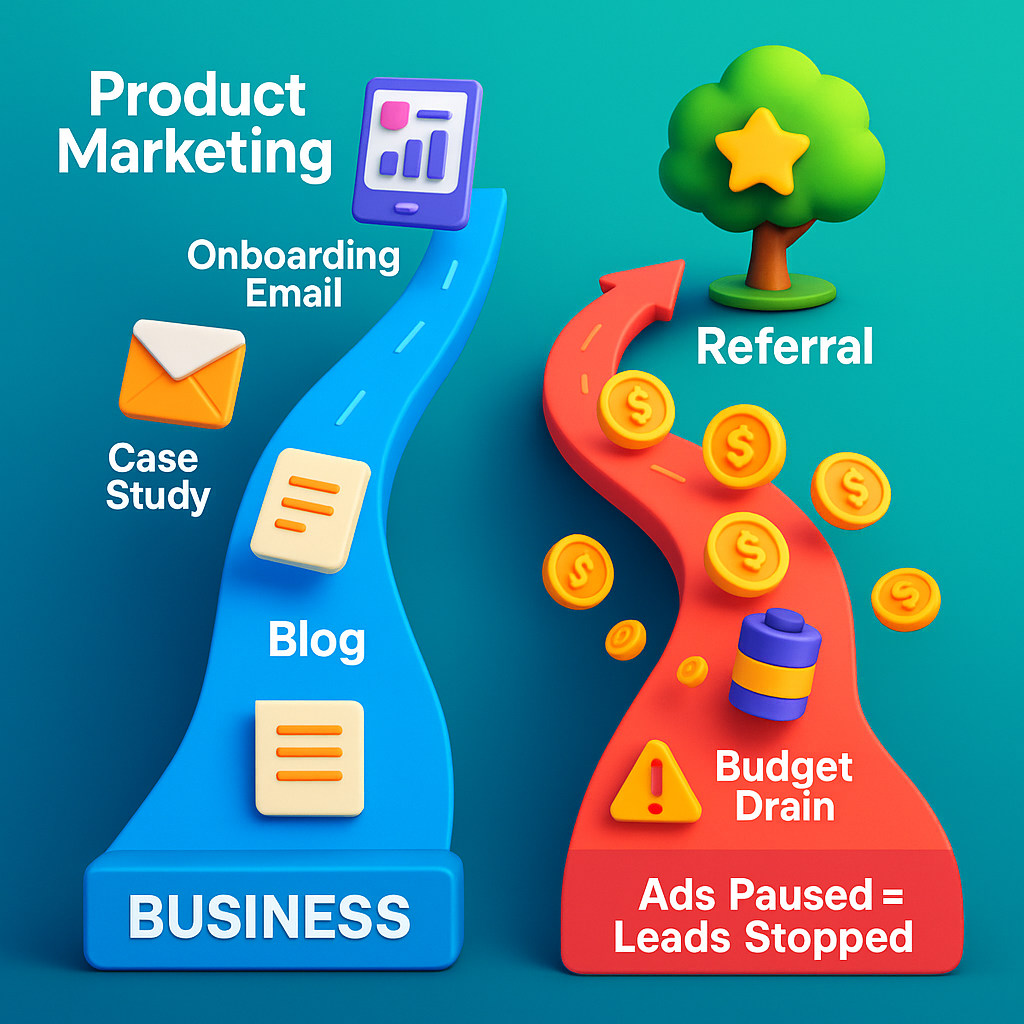
Here’s an example: A SaaS tool improved its onboarding emails. Users started setting up their accounts faster. Many shared their success on social media. No ads were run, but signups still doubled in one month. This is organic customer acquisition. It comes from value, not budget.
If you want to grow without chasing cold leads or spending big on ads, focus on product marketing. It helps people see why your product matters and makes them want to share it, too.
What Does a Product Marketer Actually Do?
A product marketer can make your product easy to understand. It can also help you build stronger bonds with the user end. This type of marketing ensures that your users use and advocate for your product. Here’s a look at what they do:
- Market research – They study trends to know what your customers want.
- Customer interviews – Talking to real users uncovers true needs and pain points.
- Competitor analysis – They check what rivals offer and pinpoint your edge.
- Messaging creation – They craft clear, user-focused product messaging.
- Supporting sales – They equip sales teams with tools like one-pagers and battlecards.
- Educating users – They build guides, tutorials, and webinars to help users win.
But product marketers don’t work alone. It’s often done by partnering closely with product teams, sales reps, and customer success to ensure smooth handoffs and consistent messaging.
Here’s an example. Often during onboarding, many users drop off early. So, a product marketer would spot this friction and find a means to address it. They would rewrite the messaging in the welcome sequence, or perhaps simplify the setup steps. As a result, these actions would improve activation rates and onboarding cases.
It’s worth noting that in 2024, 73% of product launches failed to hit over 50% user adoption, often due to poor communication or misaligned features. This shows why go‑to‑market strategy and product messaging matter so much.
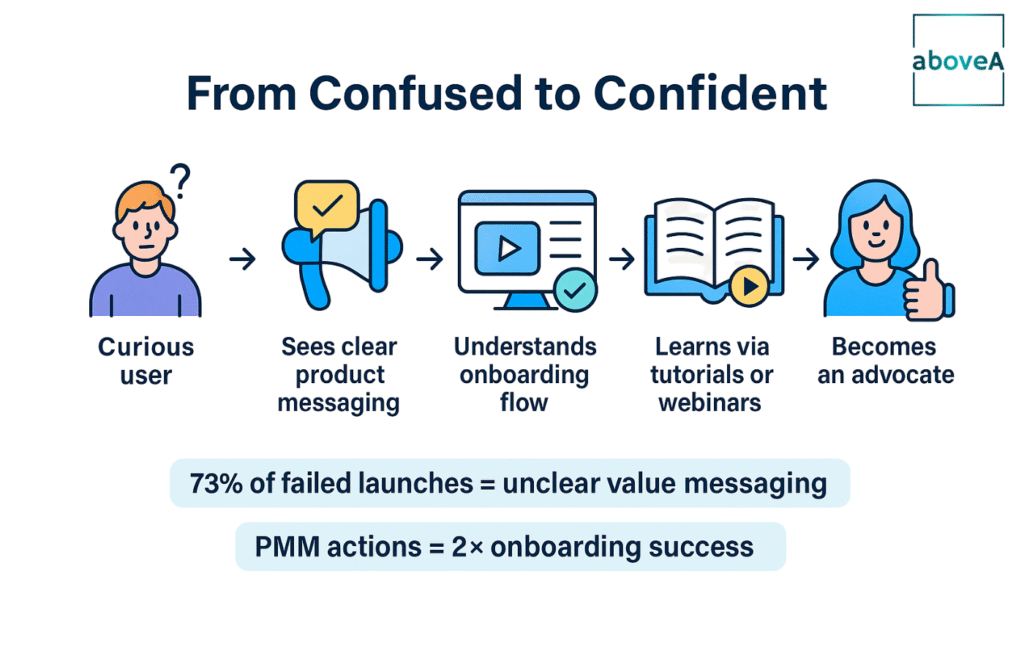
In short, a product marketer turns complex features into simple benefits. They guide users from curious to confident, and that’s how great products grow.
The 4 Pillars of a Great Product Marketing Strategy
A strong product marketing strategy is not just a mere plan on a piece of paper. It is a system made of pillars that work together to help your product connect with the people and grow, without needing paid ads.
1. Positioning: Who It’s For and Why It Matters
It’s important to know your audience. In well-rounded positioning, you should have a clear statement of who your product helps and what makes it different. Are you solving a daily problem for freelancers? Saving time for teachers? Helping small teams stay organized? Good positioning sets the tone. If this is unclear, even the best product can feel confusing.
2. Messaging: Show Value, Not Just Features
Next comes value messaging – you explain what your product does, but in a way that focuses on outcomes, not just tools. Saying “you can tag tasks” is a feature. Making statements, like “you’ll never miss a deadline again,” is valuable. Product marketing communicates dry specs into benefits people care about – tapping ot the target audience’s needs. The messaging is often short, real, and customer-friendly.
3. Enablement: Equip Your Team and Users
So that your message is clear, others need to use it too! Enablement stands for giving your sales team cheat sheets, your support team answers, and your users simple how-to guides. This comes in the form of demos, one-pagers, FAQs, and comparison charts. These assets can help your team speak with one voice. Also, it will help users get more from your product, faster.
4. Launch & Feedback Loop: Share It, Then Improve It
Finally, great launches don’t end at “go live.” A smart product marketer should collect feedback from the launch. What worked, what didn’t – and uses it to refine the next move. This is where case studies, reviews, and user feedback play a big role. Every launch initiative will make your messaging stronger and more focused.
So to say, these four pillars are meant to create a product marketing strategy that builds trust, delivers value, and grows your business organically.
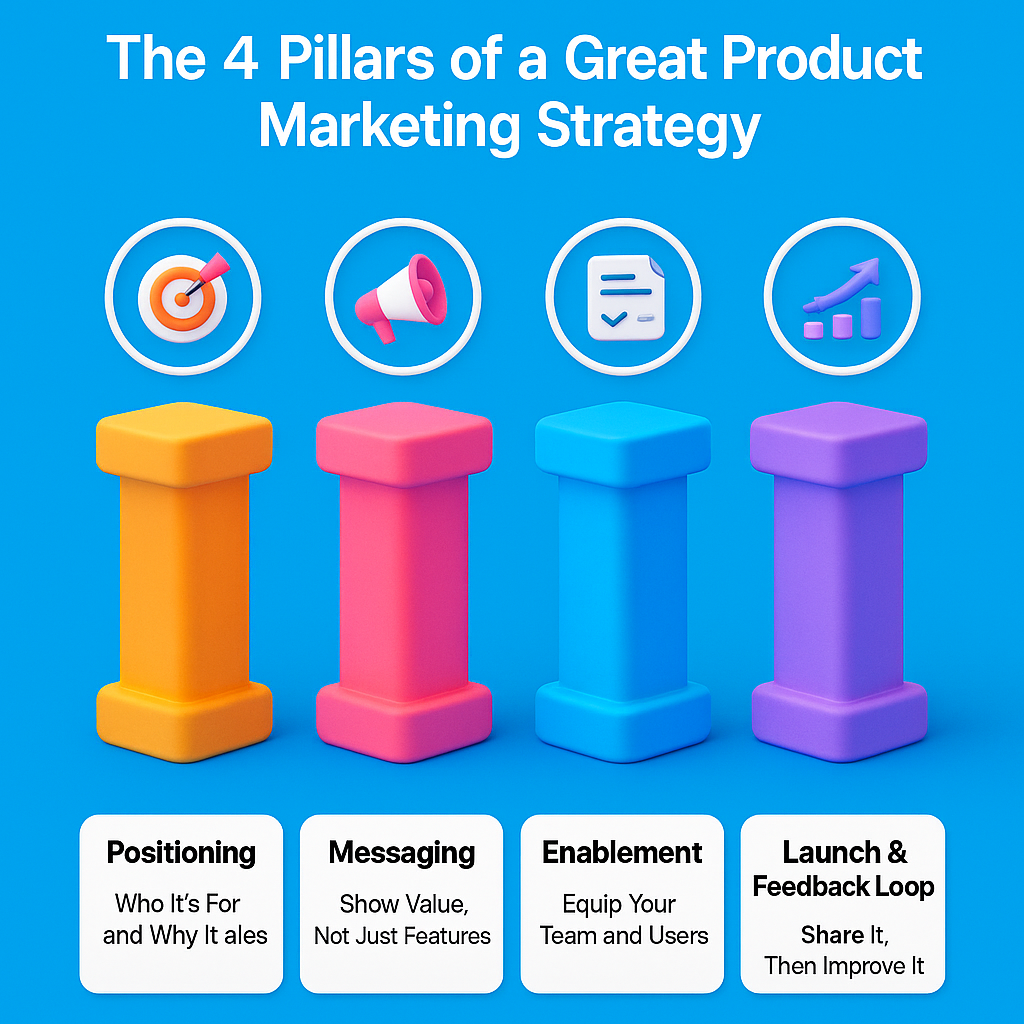
Case Studies: Real 2024 - 2025 Wins in Product-Led Growth
Now, let’s take a look at how the product marketing works in practice. Below, we will examine two real-world examples from 2024 – 2025. These cases will cover how smart product marketing strategies fueled explosive growth, without relying on PPC. That said, let’s dive in and see how this marketing system functions if put into action.
Figma: From Design Tool to $749M Revenue Powerhouse (2024–2025)
The first case will examine Figma. This product allows users to create designs in three different modes: design mode, prototype mode, and developer mode. Figma was issued in 2016, but its official (stable) release happened only in 2024. In its 2025 S-1 filing, Figma reported $749 million in revenue for 2024, a 48% year-over-year increase, and posted $228 million in Q1 2025, up 46% from Q1 2024.
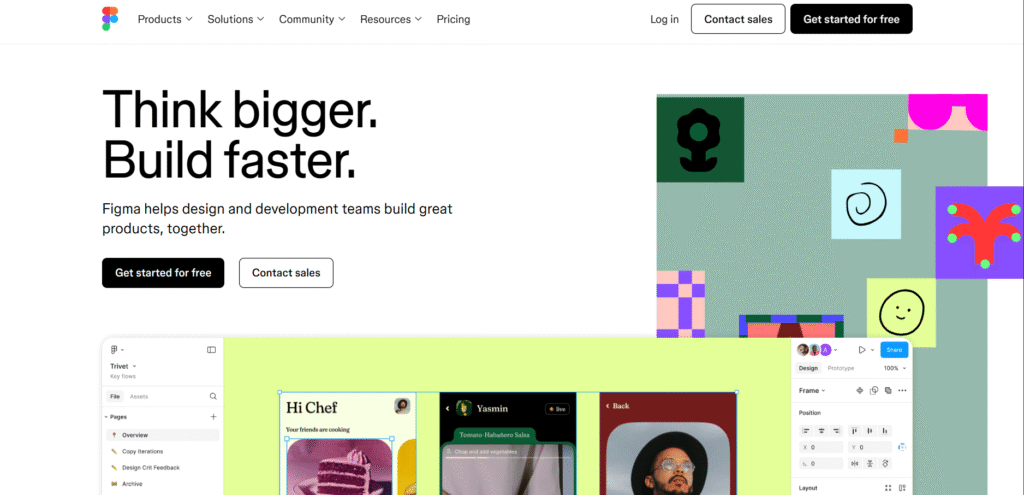
These results came not from paid campaigns, but from product-led growth powered by:
- Well-tailored positioning tactic, which was framed as “Google Docs for design,” highlighting real-time collaboration and simplicity.
- Organized and key audience-related messaging that emphasized aspects like a product that is meant to allow “design teams collaborate instantly” – thus highlighting Figma’s practical value.
- Utilization of viral loops, which enabled browser-based sharing: users invited teammates with a link, spreading organically.
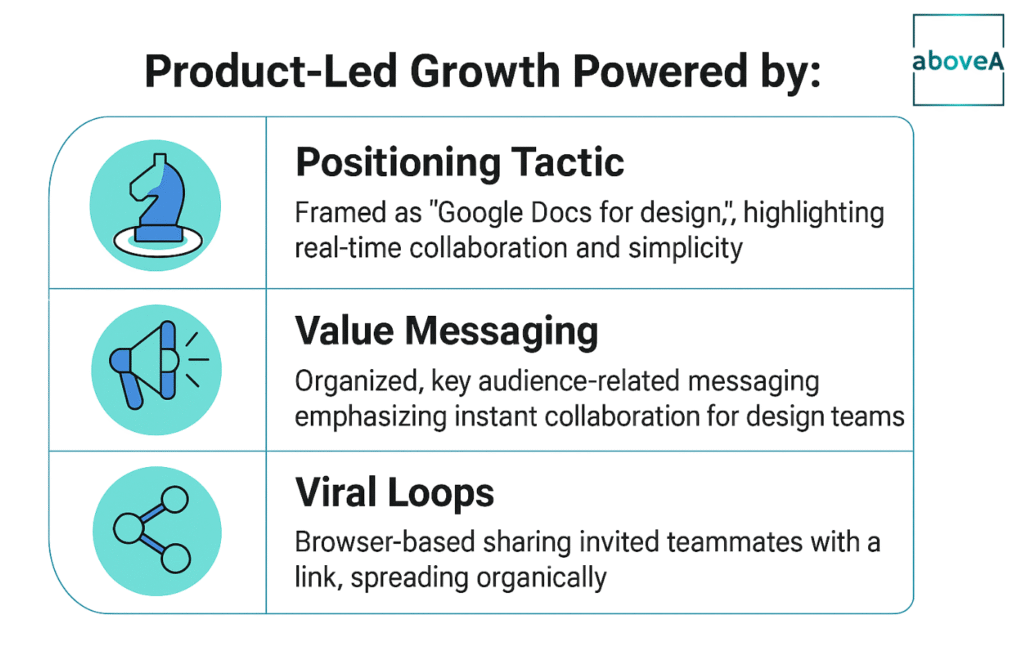
Strategic enablement, including tutorials, community templates, and in-product demos, supported users and encouraged deeper engagement.
These strategies led to a 132% net dollar retention rate. This resulted in attracting 13 million monthly active users, two-thirds of whom aren’t designers. Also, Figma’s IPO filing noted that 95% of Fortune 500 companies use its platform, which is further proof of its organic reach.
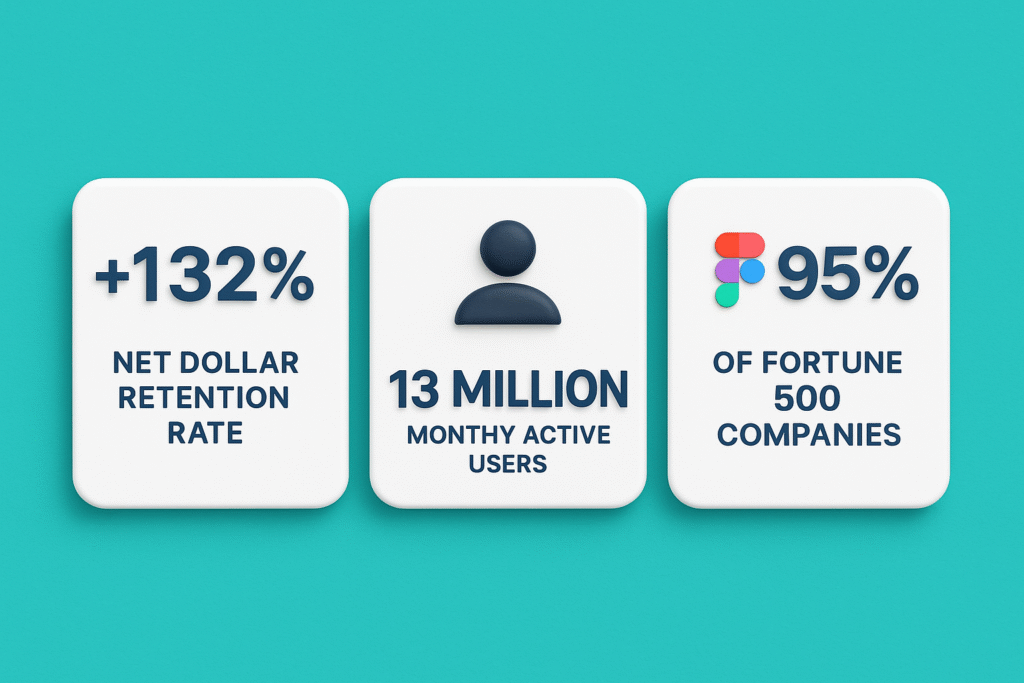
That said, Figma’s product itself became the engine of marketing. It was achieved thanks to clear value, seamless sharing. Also, a strong focus on user-focused messaging turned its tool into a growth platform. Figma is a classic product-led growth, driving massive scale without paid ads.
Notion: Community & Product-Led Growth Fuel $10B Valuation (2024)
The next case study I would like you to pay attention to is from Notion. This SaaS product provides a single space where users can think, write, and plan. Also, manage projects or organize the operations and team tasks. By 2024, Notion had grown into a powerhouse with $10 billion valuation and 20 million users. This was a result of all being driven by organic customer acquisition. Here are some strategies they applied last year:
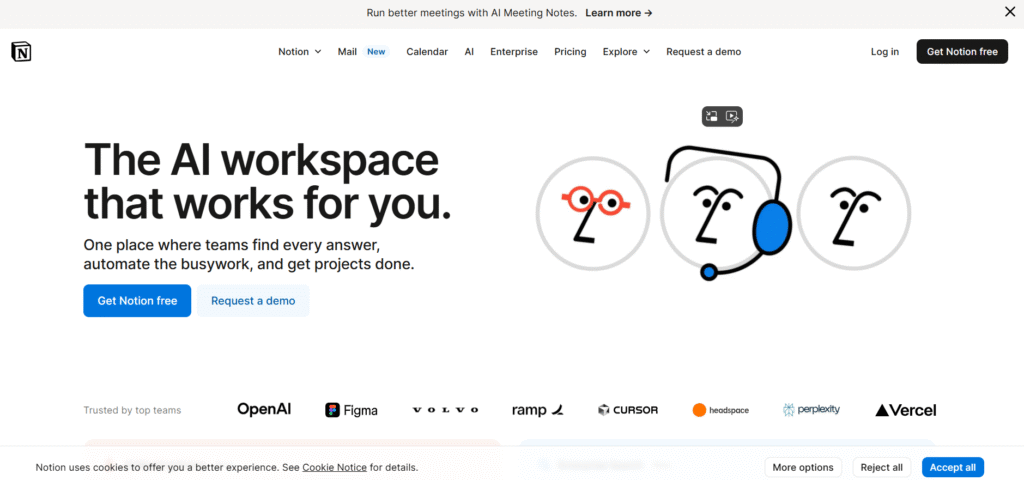
- Notion launched an Ambassador program. This was done by tapping into Reddit, Discord, and local groups, expanding adoption through peer advocacy. This helped to bring new users to their platform.
- Another tactic Notion uses is empowering users to create and share templates, reducing reliance on ads. This community-building and know-how-sharing approach helped them bring more users. Turning Notion into a space for knowledge sharing.
- They also utilized an approach known as evergreen content. This included the production of tutorials, webinars, and a crowded template gallery that helped users learn by doing. Also, this content generated traffic ensured a constant flow of organic traffic down their lead funnel.
What we can learn from the Notion case is that by prioritizing value messaging, peer support, and ease of use, a product-led marketing can achieve 90% organic growth and maintain its momentum through the years to come.
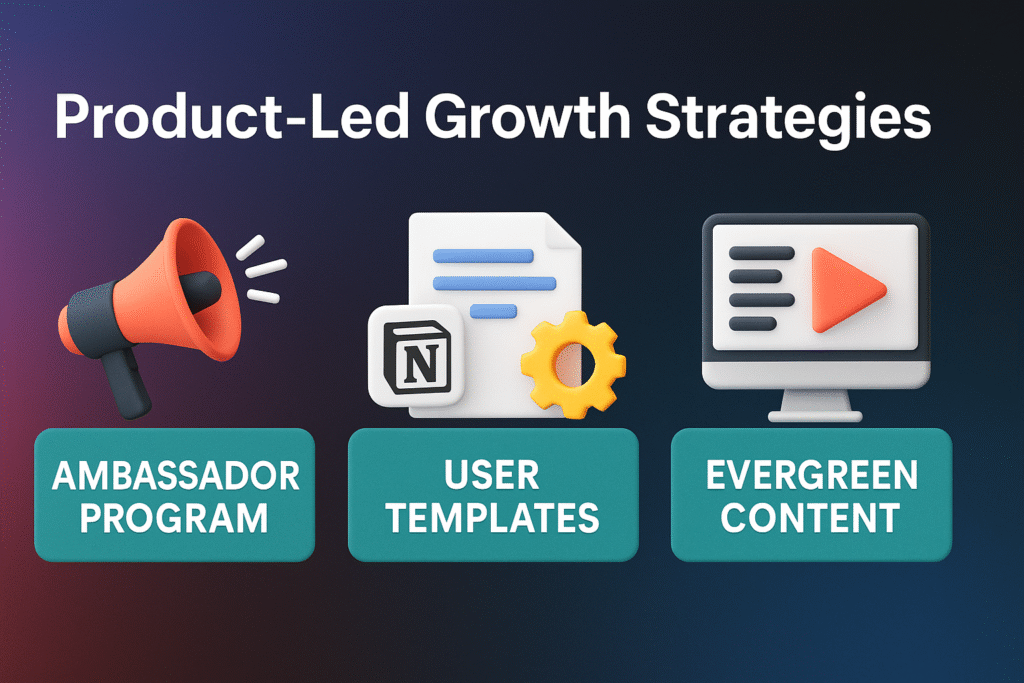
Notion didn’t pay for visibility. Instead, their team created a product worth talking about. Its community became its sales force, proving that selling without ads is possible when value and experience lead.
What These Cases Teach Us?
Both Figma and Notion leveraged value-driven positioning, in-product education, and organic loops to achieve massive growth. No budget for ads? No problem. With the right strategy, a product can generate traffic and lead generation by itself.
Your product might be underused. Let’s reposition, repackage, or re-price it for bigger results.
Conclusion: Let Your Product Do the Selling
The true power of product marketing lies in clarity, not cost. It’s not about spending more; it’s about a smart strategy speaking to the right users and guiding them to value. You should use strong messaging and have a helpful onboarding process. You should never overestimate a great user experience. You can grow without ads and build trust that lasts.
Meet the Author

Karina Kavaleuskaya
She combines a passion for storytelling with a strategic mindset to help brands grow, stand out, and connect deeply with their audiences. Through thoughtful, impactful writing, she turns complex ideas into clear, engaging narratives that drive results.

